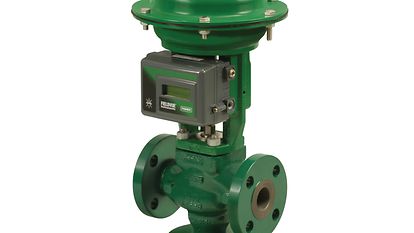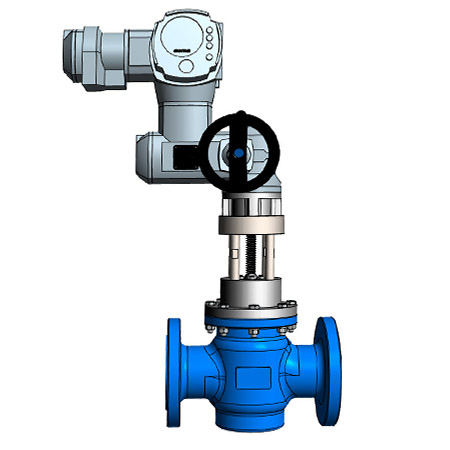Picking the Right Control Valves: A Guide to Optimal System Efficiency
Picking the Right Control Valves: A Guide to Optimal System Efficiency
Blog Article
Achieve Seamless Integration and Control With Top Quality Structure Automation Controls
In the realm of contemporary building administration, the significance of quality structure automation controls can not be overstated. As technology continues to advance, the integration and control of numerous systems within a building have actually evolved to be much more innovative and efficient. The smooth procedure and tracking of lights, A/C, safety, and various other building features have come to be critical for boosting resident comfort, energy efficiency, and general operational performance. The trip in the direction of accomplishing true assimilation and control is a multifaceted one, with considerations varying from system compatibility to cybersecurity. Embracing quality building automation controls is not merely an issue of comfort but a strategic critical for companies aiming to maximize their facilities' performance and sustainability.
Advancement of Building Automation Controls
Throughout the past couple of years, the evolution of building automation controls has actually dramatically changed the means structures are handled and run. Developing automation systems mostly concentrated on standard features such as controlling heating, air, and ventilation conditioning (HEATING AND COOLING) systems. As innovation advanced, these controls have ended up being much more innovative, permitting for a larger range of building systems to be integrated and handled centrally.
The evolution of building automation controls has actually seen a shift towards even more intelligent systems that can adjust to transforming conditions in real-time. This flexibility is essential for enhancing energy effectiveness and making sure resident comfort. Furthermore, modern structure automation controls currently supply features such as anticipating upkeep, remote tracking, and information analytics, making it possible for center supervisors to make data-driven choices to boost structure efficiency.

Benefits of Quality Assimilation
The innovation in structure automation regulates in the direction of more smart systems has underscored the substantial benefits of quality integration in optimizing structure operations and boosting total effectiveness. Quality combination of constructing automation controls offers a number of crucial benefits. It leads to enhanced power efficiency by enabling different systems to work together effortlessly, ensuring ideal efficiency and decreasing power waste. Secondly, top quality integration boosts resident comfort and performance by making it possible for customized control over ecological settings like temperature level, air, and lighting top quality. This modification can result in an extra helpful and comfy working or living setting. Additionally, high quality combination streamlines upkeep and troubleshooting procedures, as all systems are interconnected and can be monitored and regulated from a central user interface. This centralized control additionally provides far better presence and understandings right into building efficiency, allowing aggressive maintenance and optimization approaches. Generally, the advantages of high quality assimilation in structure automation controls are obvious, using increased efficiency, convenience, and operational performance.
Improved Customer Experience and Accessibility
Enhancing user interaction with building automation regulates via user-friendly design and improved accessibility elevates the overall experience for occupants and center managers alike. By focusing on user experience, building automation systems can click for more come to be a lot more efficient and easy to use. Instinctive user interfaces, clear navigation, and customizable settings equip individuals to interact with the controls conveniently and properly.
Access features play an important function in guaranteeing that all people, including those with specials needs, can make use of the building automation controls with simplicity. Incorporating functions such as voice commands, tactile buttons, and color-contrasted displays can boost availability and make the controls check my blog extra inclusive.
In addition, improved customer experience leads to higher customer satisfaction, increased productivity, and far better decision-making. Owners can change environmental settings according to their choices, while center supervisors can successfully take care of and keep track of building systems - control valves. Overall, prioritizing individual experience and access in structure automation regulates adds to an extra smooth and productive building environment for all stakeholders involved
Lasting Practices With Automation

Additionally, automation can assist in the assimilation of eco-friendly energy sources such as solar panels or wind generators into building procedures. Via automation, structures can align with modern sustainability goals and add to a greener future.
Future Trends in Structure Control Systems
In anticipation of advancing innovations and progressing sustainability practices, the trajectory of building control systems is positioned to embrace transformative techniques and cutting-edge options. One prominent pattern forming the future of building control systems is the enhanced assimilation of Artificial Knowledge (AI) and artificial intelligence. These modern technologies enable structures to adapt in real-time to transforming problems, maximizing power usage and boosting comfort for owners. Furthermore, the Net of Points (IoT) is transforming structure control systems by attaching gadgets and sensing units to streamline procedures and improve performance.
An additional key fad is the focus on cybersecurity procedures to shield versus prospective risks to constructing automation systems. As buildings become a lot more interconnected, ensuring durable cybersecurity methods will be necessary to secure sensitive information and avoid unauthorized gain access to.
Moreover, the shift in the direction learn the facts here now of cloud-based platforms is acquiring energy, permitting streamlined control and remote access to building systems. This helps with easier surveillance, maintenance, and updates, boosting the general efficiency and versatility of structure control systems. As technology continues to breakthrough, these trends are expected to shape the future landscape of building automation controls, driving development and sustainability in the constructed setting.
Conclusion
Future trends in building control systems are most likely to concentrate on more improving automation capacities for enhanced energy performance and total performance. It is vital for building owners and operators to focus on the adoption of quality building automation manages to enhance structure operations and achieve long-lasting sustainability objectives.
In the realm of contemporary building management, the value of high quality building automation controls can not be overstated. Generally, the evolution of building automation controls continues to drive advancement in the structure administration industry, using brand-new possibilities for developing smarter and much more lasting buildings.
The development in structure automation controls in the direction of even more intelligent systems has emphasized the significant advantages of high quality integration in maximizing structure operations and enhancing overall performance. Generally, focusing on individual experience and accessibility in structure automation controls adds to a much more efficient and seamless building atmosphere for all stakeholders entailed.
It is essential for structure owners and operators to prioritize the fostering of top quality building automation controls to optimize structure operations and attain lasting sustainability goals. - control valves
Report this page